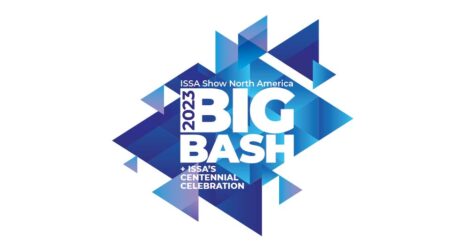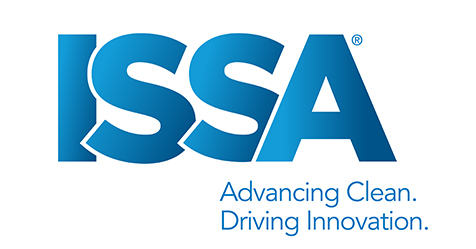Sometimes it might seem easy just to fire or ignore employees who may not be delivering on the job. However, a process called progressive discipline offers an alternative solution that is also constructive.
Progressive discipline is the correction of bad behavior that occurs during a period of time. The goal of this process is not to punish employees and fire them, but rather, to provide guidance, coaching, and learning opportunities for both the employee and supervisor.
Defining the Expectations and Job Description
Progressive disciplinary actions do not work if there are a few items missing.
First, each organization must have a set of job descriptions for each employee type. These job descriptions can, and most likely will, change during the course of an employee’s career. Job descriptions should be reviewed on an ongoing basis with the employee in order to maintain the focus of his/her job.
The second item that tends to end up missing in the custodial department is a well-defined set of expectations. Standards can be created internally or by utilizing association standards, such as the ISSA Clean Standard or those from APPA.
Without setting a foundation with a job description and standards of excellence, an employee will not know what the company expects from him/her; this will cause a lot of gray area. These two important documents should tie in with the organization’s mission and core values.
Communication Standards
Once the standards and detailed job descriptions are known to an employee, it is crucial to keep the lines of communication open.
Most employees want to enhance their performance, not fail. However, most of the time, the employee is unaware of his/her failure or challenges. An employee should never be caught off guard about performance if a direct supervisor stays in constant communication. If a direct supervisor communicates regularly with employees, they will know the areas in which they have challenges.
Additionally, as a supervisor, you must remember to avoid always targeting your employee’s bad behavior or failures; if you only focus on the bad topics, employees will ultimately lose morale.
Consistency is Key
A supervisor must remain consistent with all employees that directly report to him/her. Once a supervisor shows favoritism with one employee over another, the progressive discipline process falls apart.
The Process
Although we talk about consistency, progressive discipline can look and feel different within every organization. In most cases, human resources will provide the progressive discipline tracks for the entire organization. This process can change based on union negotiations within the organization.
The typical process of an employee progressive discipline program is broken into four steps.
Phase One: Verbal Warning
During the verbal warning phase, it is important to remember that all conversations should be documented and signed by both the employee and his/her direct supervisor. Within the verbal warning phase, the supervisor documents the issue has been brought to the attention of the employee and an action plan has been put into place. The documented verbal warning should be placed in the employee’s personnel folder with human resources and a copy should also be given to the employee.
The intention of the action plan is to help rectify the situation with the employee. Keep in mind the intention is not for the employee to fail or feel that they will never succeed. They must be provided with all of the resources available to them to help them succeed.
Phase Two: Written Warning
The second phase is a written warning. The written warning usually receives approval by upper management and/or human resources before the employee receives it. Again, this documentation should be kept in the employee’s personnel folder.
Phase Three: Suspension
The third phase of this disciplinary process is usually a suspension. This is a temporary relief of duties without pay. The length of the suspension can be different based on the organization. This phase must receive approval by upper management and/or human resources. Typically, the supervisor does not have the authority to approve this phase; they can only recommend.
Phase Four: Dismissal
The final phase of the progressive discipline process is the dismissal of the employee. This is the most severe form of discipline within any organization and a strong case toward the employee must be present. This must have approval from human resources, upper management, and the supervisor.
Other Considerations
All parties involved with the process must communicate consistently. During each phase, try to include a witness in the conversation. This person should be another supervisor, manager, or human resources representative. Never choose a direct report as a witness.
Additionally, even though the typical process has four categories of disciplinary action, each organization may have different levels within its process. For example, many unions now ask for coaching/counseling to be the first step in the progressive discipline process.
During the coaching or counseling phase, you must provide accurate and defined instructions to the employee. This will be treated as a guidance process from the supervisor. This part of the process needs to be documented, as well.
Once the employee receives instructions and understands them, have him/her sign the document stating he/she understands. Allow enough time for the employee to begin fixing his/her situation under your leadership. The amount of time required for improvement may change based on the type of job infraction that took place.
Take Advantage of Training
Remember: Progressive discipline is not just about holding people accountable for their performance. It is just as important to use this process as a training opportunity.
As management-level employees, you must realize the opportunity in every difficulty. Many times we hear the statement, “I don’t have time to focus on training with this type of employee.” In all actuality, this is the best person to work with on training. This person has the most room for improvement, and you have already measured his/her performance.
Supervisors and managers typically spend a lot of time with difficult employees. The 80/20 rule indicates that 20 percent of your employees provide 80 percent of the challenges you face. Many times, supervisors become exhausted having to deal with discipline issues. As a supervisor, if you can reduce the time spent on negative discipline procedures and change the focus to enhancing an employee’s career through training, you will become more productive as a team.
The Bottom Line
One way to help an employee grow is to provide a very specific and measurable goal for him/her to attain. In order to enhance your employee’s performance, it is smart to provide this goal and all of the resources to achieve the goal.
A supervisor or manager who does not provide every resource available will set his/her employees up for failure. Employees do not want to work poorly and fail; they want to succeed. Are you providing all of the direction and resources they need?
Always utilize progressive discipline as a positive tool for employees. This is their opportunity to become stronger and grow within your organization. The success of the progressive discipline process starts and ends with you.




